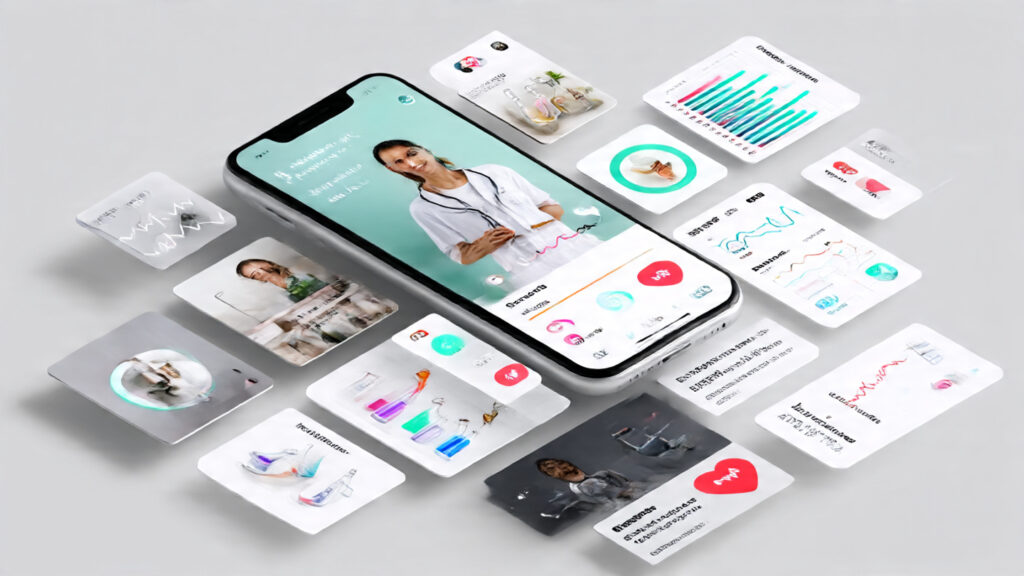The clock is ticking. You’ve seen the headlines: superhuman AI is on its way, and it’s set to reshape society more than the Industrial Revolution. A 2027 forecast report by a former OpenAI researcher suggests that AGI (Artificial General Intelligence) is happening soon, and while the idea of AI agents replacing entire departments from coding to research sounds like science fiction, the massive investment flowing into AI startups proves this future is being built right now.
With over $160 billion collectively invested by top-tier venture funds like Andreessen Horowitz and Sequoia Capital in the past 18 months, and giants like Meta spending over $65 billion to go “AI-first,” the magnitude of this shift is undeniable.
But here’s the good news: the door to AGI innovation isn’t closed yet. The real opportunities are wide open for those who move fast, identify gaps, and build AGI-driven tools people genuinely need. The data is clear — early adopters in AGI development capture nearly all the wealth.
Don’t wait for AGI. The time to start is now. Let’s dive into five AI business ideas you can launch in the next 12 months, complete with real-world examples and advice from top founders like Reed Hoffman and Perplexity’s Aravind Srinivas.
1. The Power of Specialized GPT Wrappers
The Idea: Take a general-purpose AGI model and “wrap” it with your own expertise, domain-specific data, optimized prompts, and an enhanced user experience (UX) to create a highly specialized, high-value AGI solution.
The Logic: Artificial General Intelligence (AGI) is the new electricity. Just as inventors once transformed electricity into products like toasters, kettles, and light bulbs, entrepreneurs today can channel AGI into specialized applications that solve real-world problems. You create value by:
- Capturing Specific Data: Collecting relevant user data.
- Developing Better Prompts: Using thought-out, expert-level prompts.
- Creating a Superior UX: Moving beyond a simple chat interface to a more functional application.
Real-World Example: Cal.AI, created by 18-year-old Zakia de Gary. This nutrition and fitness app uses AI to analyze photos of meals and quickly estimate calories. Since launching in 2023, it has been downloaded over 8 million times and is projected to generate $30 million this year. This proves simple, focused MVPs (Minimum Viable Products) can scale quickly.
Action Step:
- Pick an industry you know well.
- Brainstorm three repetitive tasks you could automate.
- Wrap GPT around one of them (even starting with a simple Google Sheet + API).
- Test it with 5-10 real users this week.

2. AI Marketing, Media, and Voice Monetization
The Idea: Focus on tools that automate content creation for a specific platform or build a revenue stream around your unique voice. This sector has one of the easiest entry points.
A. Focused AI Marketing Tools
AGI tools that automate repetitive tasks such as writing captions, generating hashtags, creating voiceovers, and managing translations enable creators and companies to scale content production efficiently.
Real-World Example: Poppy AI, a bootstrapped startup that achieved over $500,000 in Monthly Recurring Revenue (MRR) within its first year, demonstrates this potential. It helps marketers and creators transform their ideas into viral social media posts effortlessly. This success highlights the power of addressing real content challenges through AGI-driven automation and simple subscription pricing.
B. Building and Monetizing Your AI Voice
The demand for custom, high-quality voices for branding, advertising, and communication is booming. Platforms like ElevenLabs are creating voice marketplaces.
Expert Insight (Mati, Founder of ElevenLabs): By recording about 30 minutes of your voice, you can create a perfect replica that speaks in multiple languages. Listing this on a marketplace allows others to use it, and you get paid royalties. ElevenLabs has paid out $5 million to the community, with many voice creators earning a few hundred dollars per month.
Action Step:
- Record 10-30 minutes of your voice.
- Clone it using a tool like ElevenLabs.
- List your AI voice on a freelance platform like Fiverr or Voices.com to see if there is a market for your unique tone or accent.

3. Agentic AI: The Rise of AI Employees
The Idea: Build an autonomous AI employee capable of completing multi-step tasks in a specific business niche. This is accessible even for non-coders using no-code platforms.
The Opportunity: While those inside the “AGI bubble” are deeply immersed in this technology, countless brick-and-mortar businesses — from real estate agencies to restaurants and e-commerce stores — are still struggling to automate basic tasks. You can be the one who introduces them to practical AGI solutions that transform their operations.
Expert Insight (Samir Vasavada, Co-founder at Wise): Wise reduced its team from 160 to 40 employees while achieving tenfold performance gains by automating nearly everything. They built scalable systems from the ground up. Tasks like document signing and account opening, once managed manually by a large team, are now handled by just two or three people overseeing AGI-powered systems that process 20–30 times more accounts. The core mindset: “How do I eliminate myself?”
Action Step:
- Identify the top three bottlenecks in a business you know well (e.g., real estate, e-commerce).
- Ask yourself: “Could an AI intern handle this?”
- Build a simple demo in a no-code agent tool like Replet or Cursor and run a one-week test with a customer.
4. Focused Healthcare and Wellness AI
The Idea: Develop lightweight, non-medical AI tools for fitness coaching, nutrition tracking, sleep monitoring, and mental wellness.
The Nuance: When it comes to health, people will pay a premium for trust and specificity. General LLMs like ChatGPT aren’t doctors and can be unreliable, especially when threads get mixed (e.g., asking for diet and mental health advice in the same chat). Specialized AI, trained on specific medical data, is the answer.
Real-World Example: Superpower, an app that has access to both a user’s lab results and verified medical data. Users trust its nutrition advice and research because the AI pulls from a specific, reliable knowledge base, making preventative healthcare more accessible.
Expert Insight (Reed Hoffman): We have the technology today to put a medical assistant on a smartphone that’s “better than your average doctor” and available 24/7 for a couple of dollars an hour. This won’t replace doctors but will allow them to focus on complex cases and spend more quality time with patients, as the AI handles the initial conversation and triage.
Action Step:
- Build a lightweight wellness tracker.
- Examples: A Telegram bot for nutrition tips for a very specific group (e.g., marathon runners, people with high cholesterol), or a Chrome extension that analyzes a sleep diary.
- Keep it non-medical and test with users immediately.

5. Educational AI Products (Adaptive Tutors)
The Idea: Create adaptive, patient, and personalized AI tutors for specific subjects, exams, or skills.
The Opportunity: Education is being fundamentally reshaped. AI can offer every student the equivalent of a private coach, tracking their weaknesses, adjusting lessons on the fly, and providing infinite patience.
Examples:
- GPT-powered TOEFL prep coach: Tracks a student’s weak points and adjusts lessons, with a human teacher on the back-end to fine-tune the AI. People pay for this focused engagement.
- The Infinite Tutor: The ability to learn complex subjects like quantum mechanics through an infinitely patient tutor who can answer every follow-up question.
Action Step:
- Pick one subject you know well (English, math, coding).
- Create a simple AI tutor (it could be a Telegram bot or a simple web app).
- Share it with 10 students, get feedback, and immediately start improving it.
The Final Principle: Build for Yourself
If you’re wondering how to choose between so many opportunities, take the advice of Aravind Srinivas, co-founder of Perplexity, whose company went from zero to a significant valuation in just three years:
“The only thing you can bet on is whether you are so obsessed about a topic that you will do it anyway regardless of all the odds stacked against you. And then you’ll prove the world wrong because you go so far deep into that and no one cared about the problem more than you did. So I think build for yourself. Hopefully, that’s a thing that a lot of people in the world want and therefore you can turn it into a scalable product and a scalable company.”
You don’t need a research lab or billions in funding. You just need speed, focus, and the courage to act. The biggest companies started small: a wrapper, a voice tool, a tutor for one student.
The AI gold rush isn’t coming—it is here. Don’t wait for permission or AGI. Pick one idea, launch your MVP this week, and test it with real people. You might only have 12 months to build your wealth.




